DNA in nucleus, chromosome and genes T2 W10
1/12
There's no tags or description
Looks like no tags are added yet.
Name | Mastery | Learn | Test | Matching | Spaced |
|---|
No study sessions yet.
13 Terms
Shape of DNA molecules and length
•Molecules of DNA are in the form of long strands.
•Estimated between 2-3 metres of DNA in a human cell The width is estimated to be only 2 millionths of a millimeter.
Histones
The DNA strands are coiled around eight special protein molecules called histones to form a nucleosome.
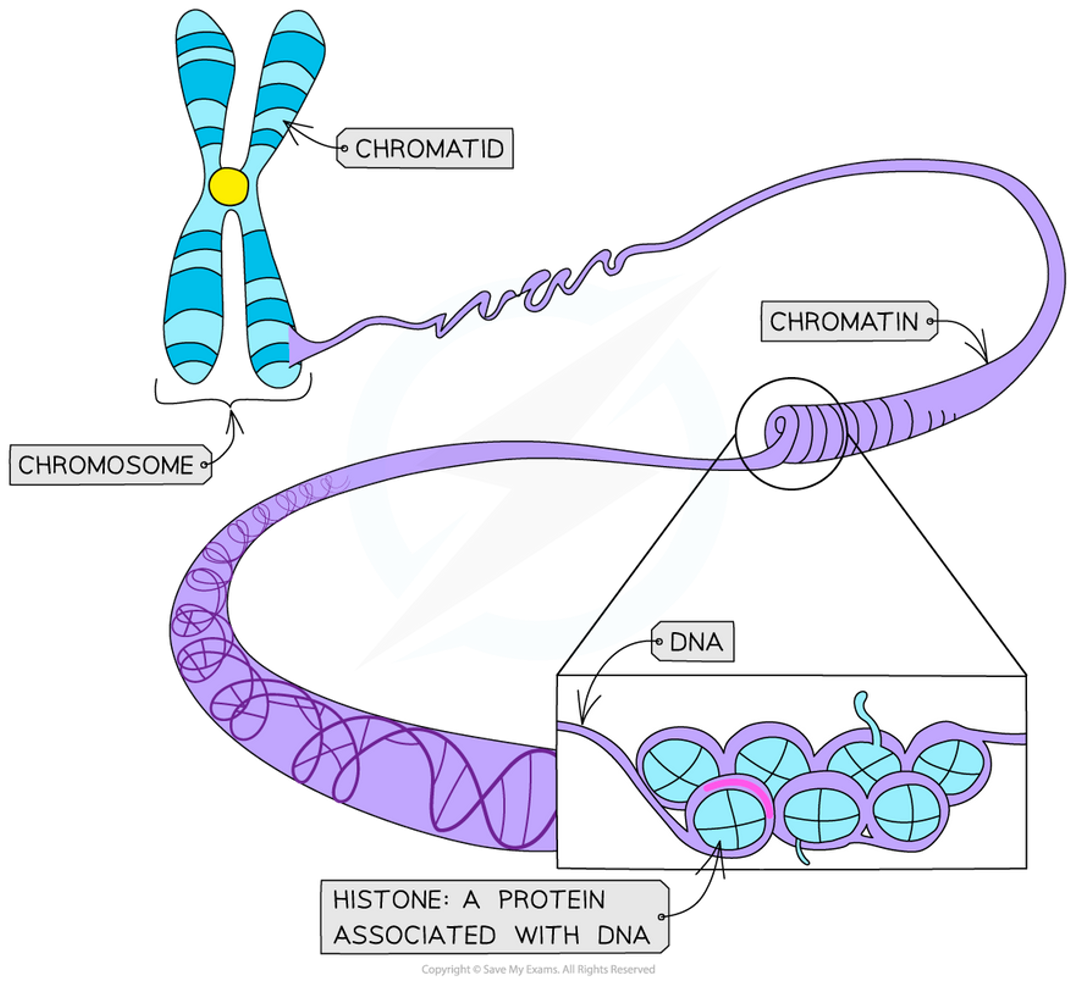
Chromatin
The network of proteins and DNA.
Chromatin become tightly/loosely coiled during:
Tightly: When cell is dividing causing it to be super coiled into a chromosome.
Loosly: When cell isn’t dividing.
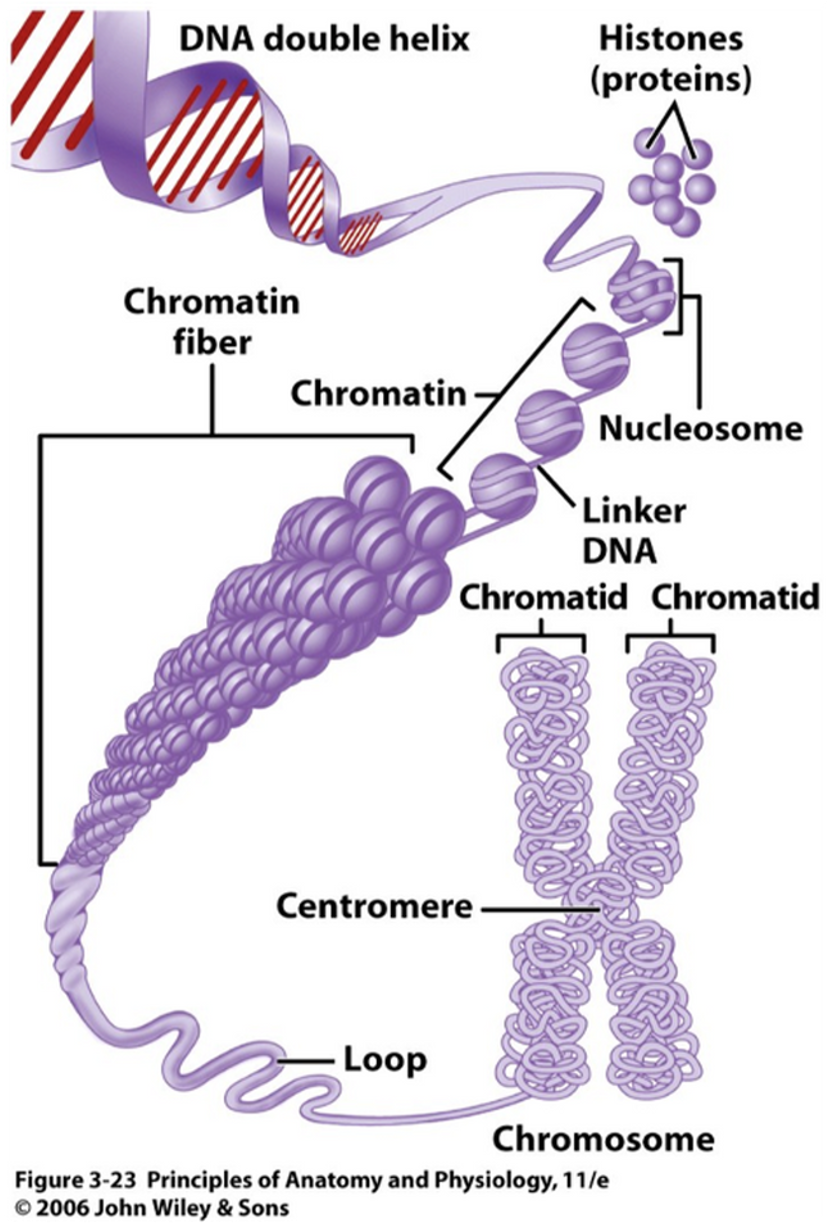
Chromosome
Structure which carries DNA/gene information in the form of genes
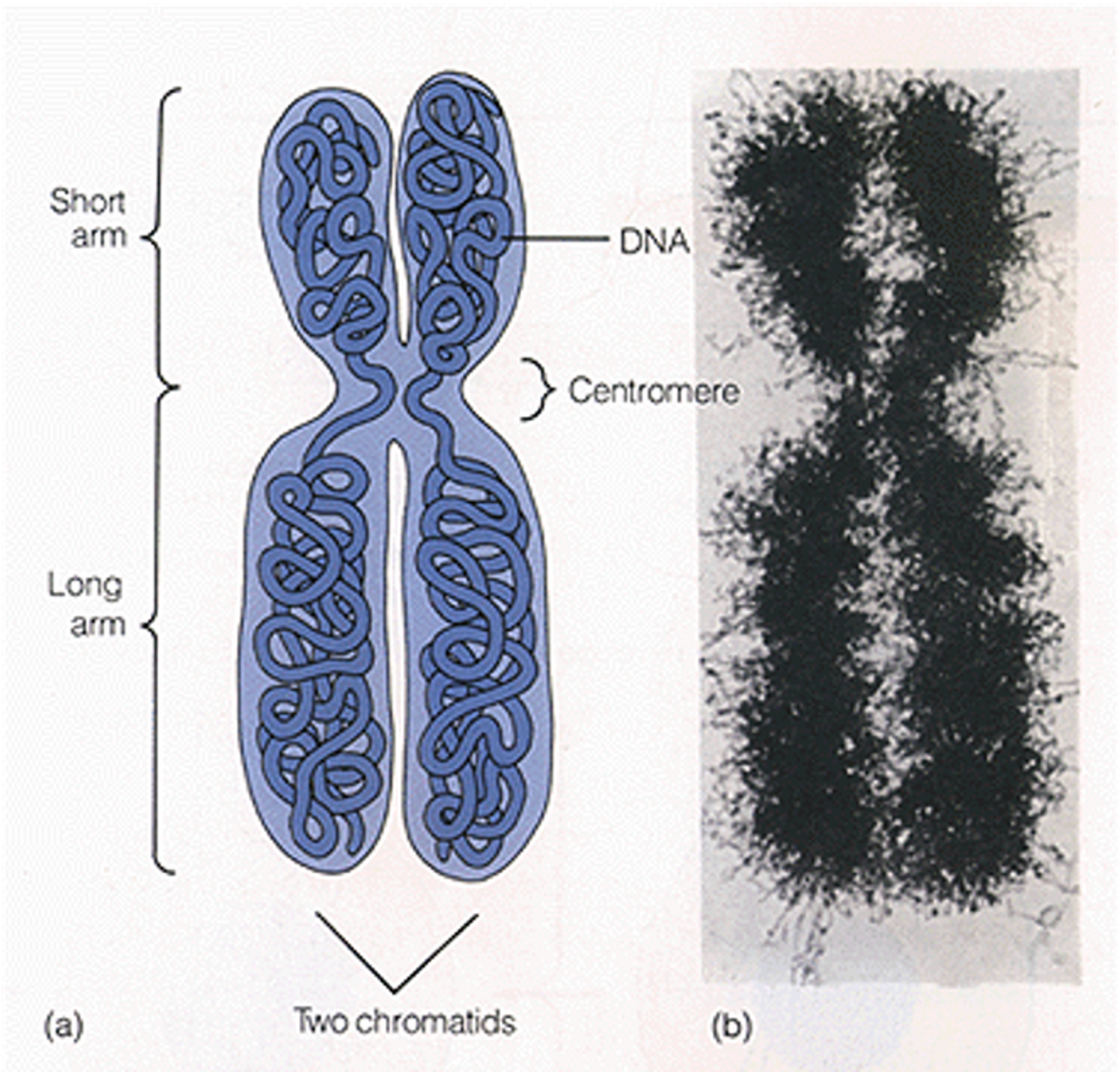
Chromatid
One of the 2 identical halves of a chromosome.
Centromere
Link between a pair of sister chromatids.
DNA structure
DNA is a polymer molecule made up of many nucleotides joined together in two strands that twist to make a double helix.
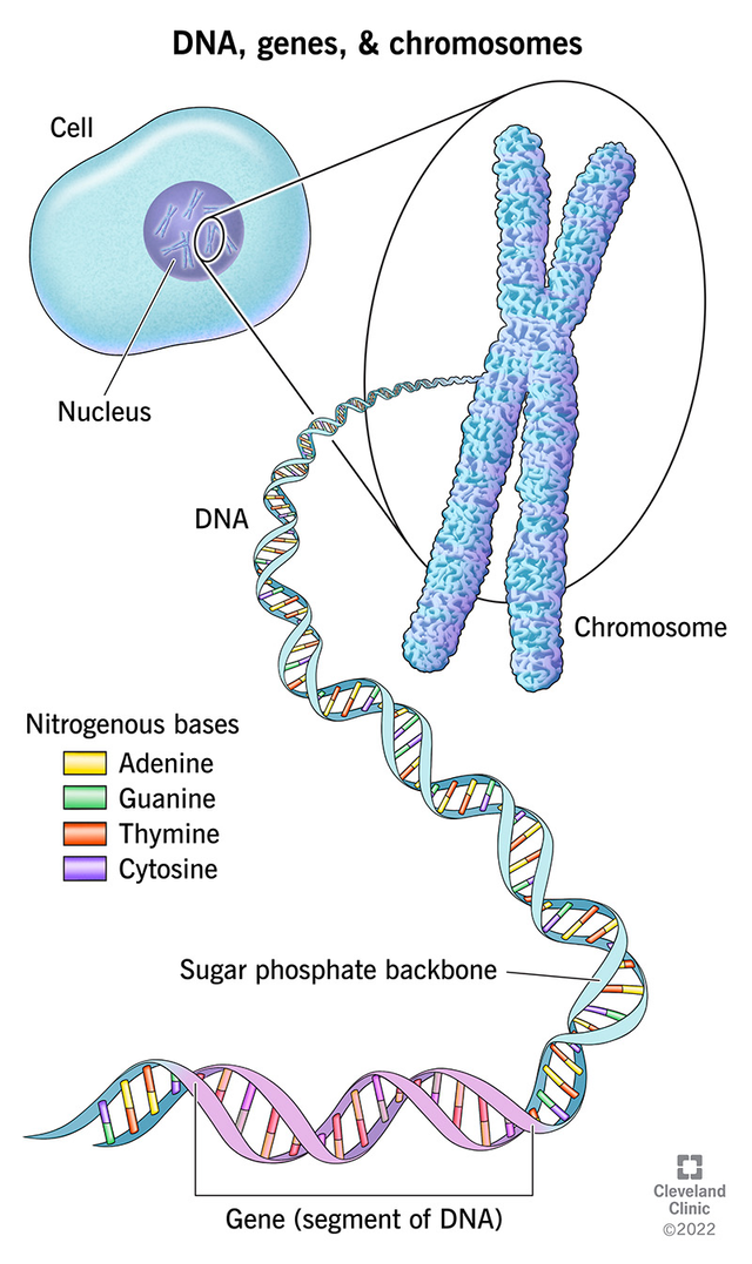
Chromosome structure
A chromosome is a rod-like structure composed of a long strand of DNA molecule wrapped around structural proteins called histones.
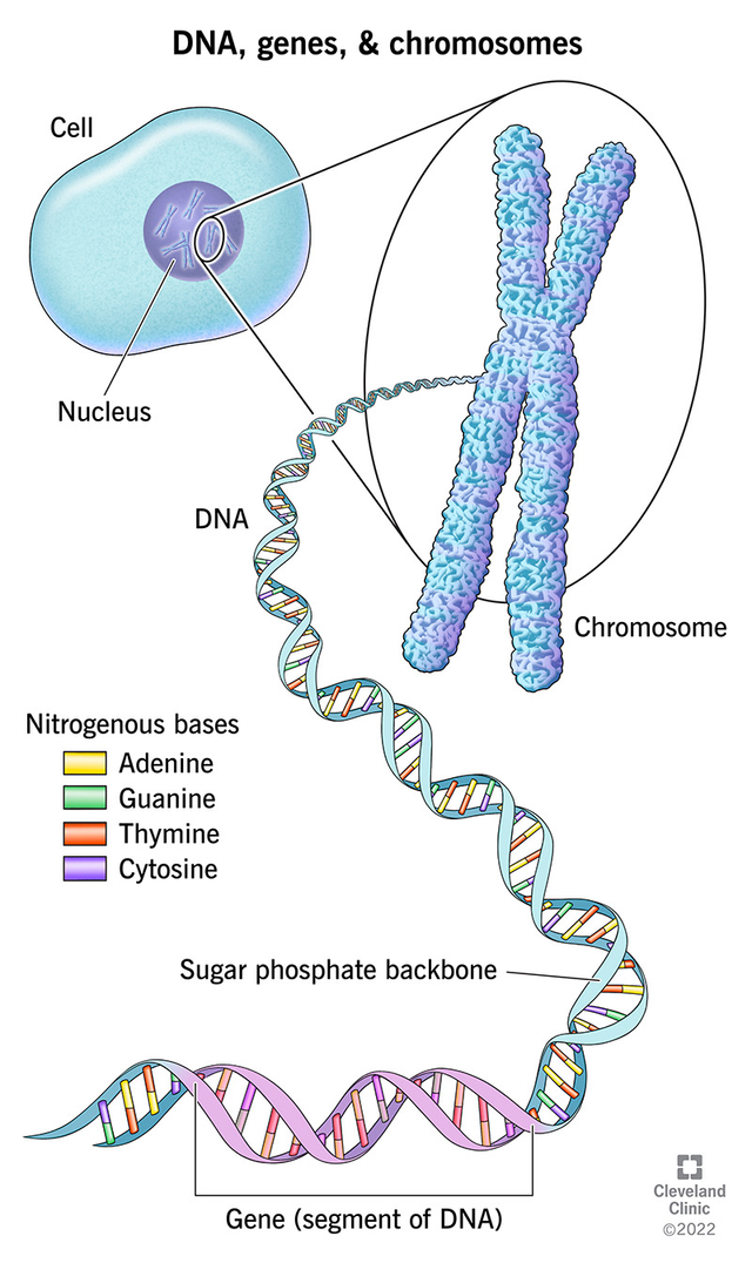
Gene function and location
A gene is a segment of a chromosome that contains the coding instructions for making a protein. There are 20,000 - 25,000 genes in nuclear DNA.
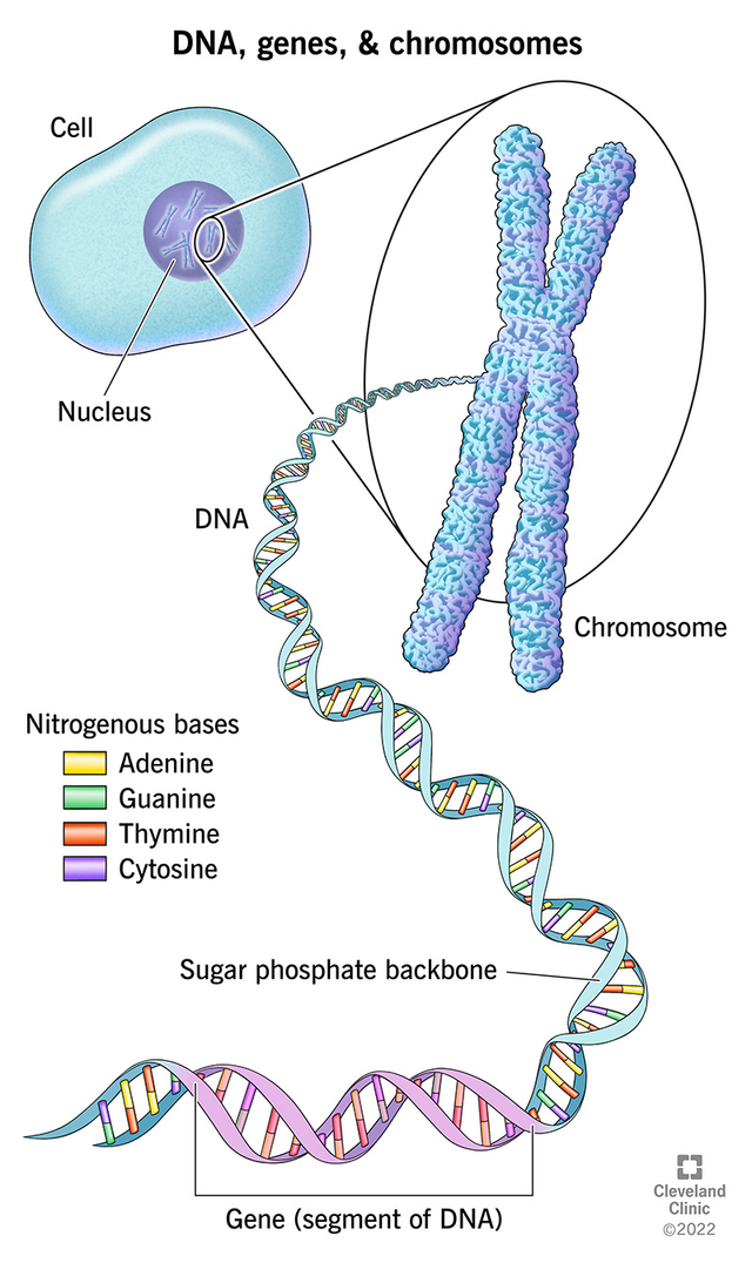
Mitochondrial DNA (mtDNA)
DNA found in mitochondria (most DNA is found in nucleus)
mtDNA structure and number of them in each mitochondria
•mtDNA is in the form of small circular molecules that are not bound by histones.
•~ 5-10 molecules of mtDNA in each mitochondrion.
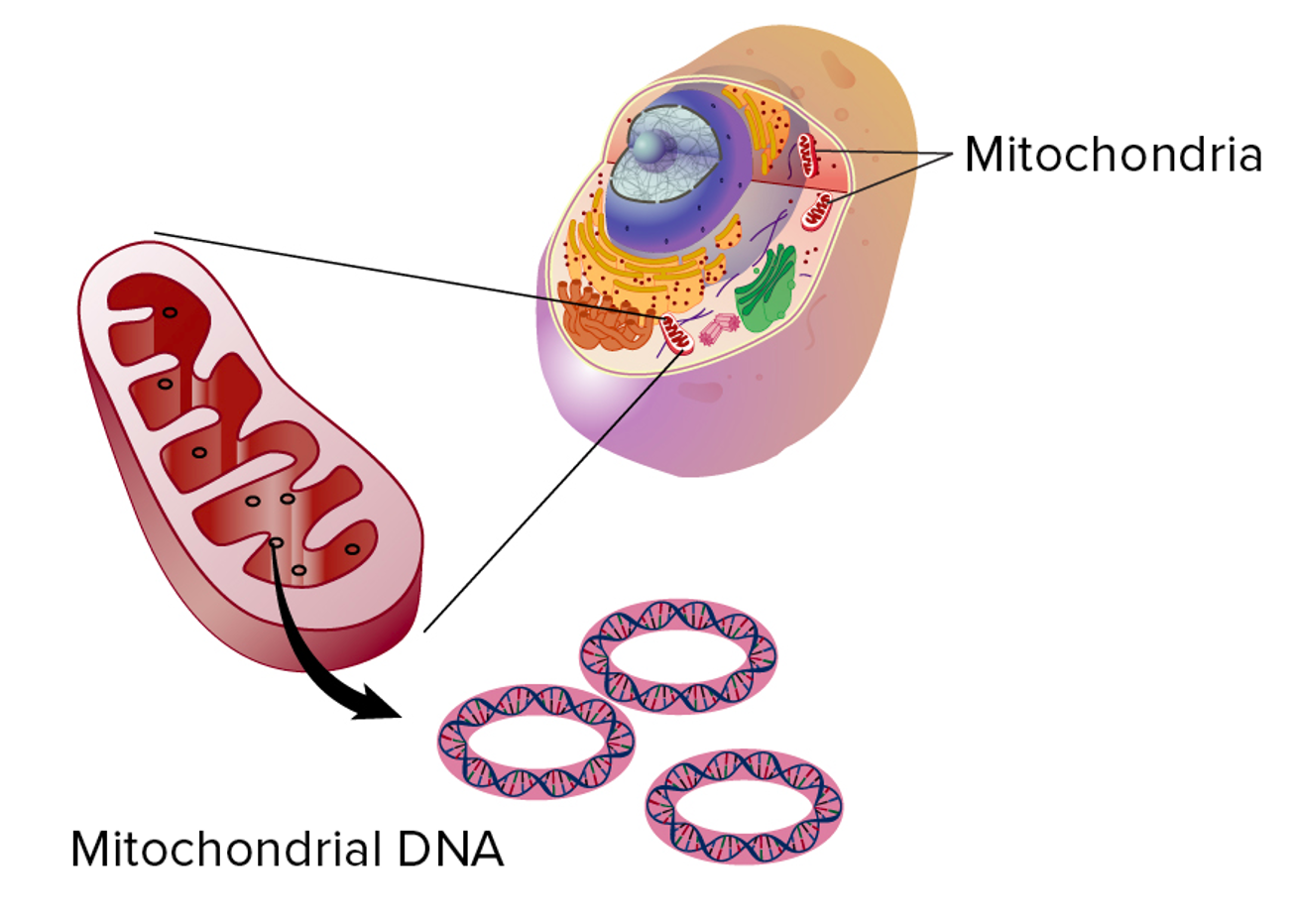
Number of mtDNA genes needed for proper function
•mtDNA has 37 genes essential for mitochondria to function properly:
⚬24 genes = contain codes for making transfer RNA (involved in protein synthesis)
⚬13 genes = contain instructions for making enzymes necessary for the reactions of cellular respiration
